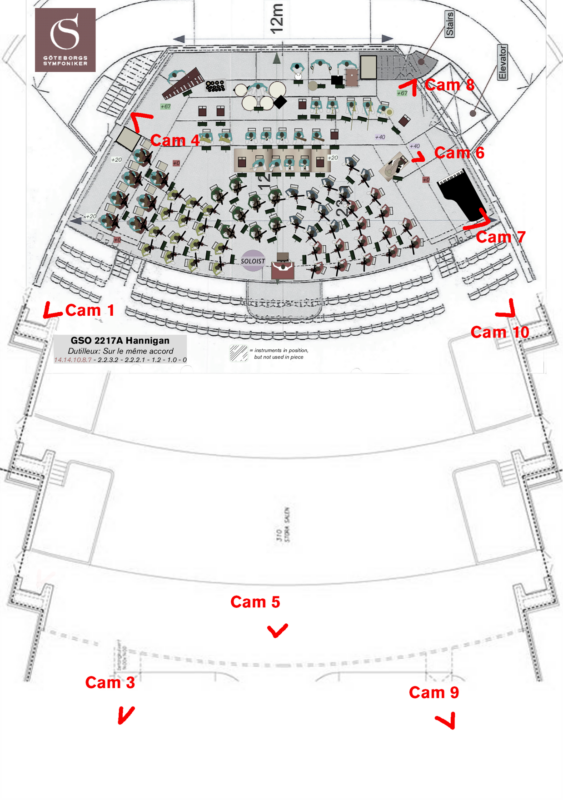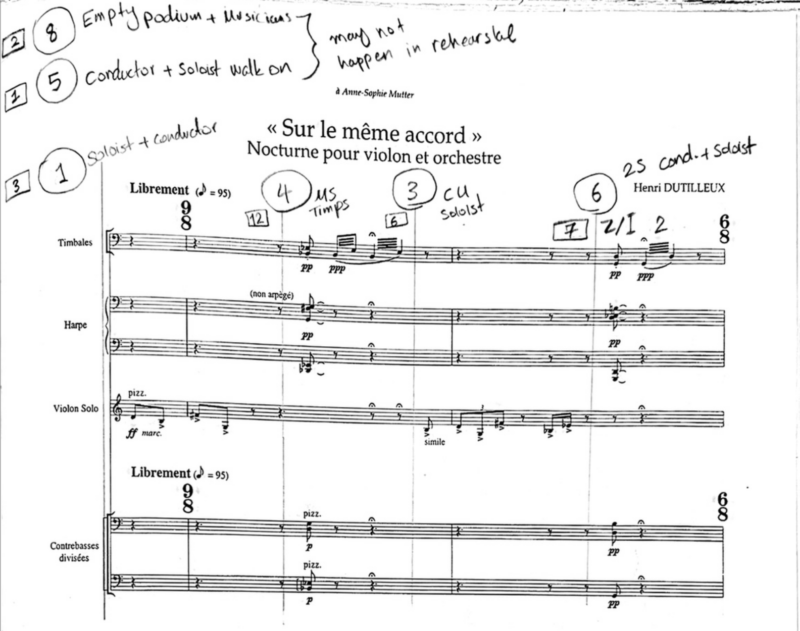By Boran Zaza, Director of Communications & Development at Orchestras Canada and content creator for classical musicians.
If you haven’t read Part I of this blog post series, I recommend you do so before proceeding!
One of the most important lessons I learned from attending the Live Multi-Camera Directing in Classical Music workshop in Sweden last April, was that preparation is the most important part of the process. The better you know your score, orchestra, conductor, concert hall, camera setup and production team, the better you’ll be set for successful live coverage of the concert. Of course, it was impossible for us, the 16 participants from around the world, to plan all that without ever having been to Gothenburg or its famous concert hall. Thus, we took our preparation process virtual, on the world wide web!
Preparing for Live Multi-Camera Directing
Before landing in Gothenburg, Sweden, we attended an online workshop on how to prepare for Live Multi-Camera Directing in classical music. Each participant was assigned a piece of music to direct live in Gothenburg – either during the dress rehearsal, or during a concert of the Gothenburg Symphony Orchestra. I was assigned “Sur le même accord” by Henri Dutilleux: A beautiful work for solo Violin and Orchestra, which I later got to direct live, with the fabulous Barbara Hannigan conducting, and John Storgårds on the violin.
Along with the piece assignment, we were given a camera layout sketch, showing us where the 9 cameras to which we would have access would be placed on the day of the concert.

The Magic of Presets
So, now we knew what piece of music we’d be directing, we knew where the cameras would be placed — but an essential piece of information was yet to come: The presets for each camera. As a director, you’d normally have to plan these yourself. But since we were 16 directors with no prior access to the concert hall and the cameras, those presets were done for us in advance by the IMZ Academy team.
So what’s a preset anyway? In modern-day multi-camera directing, a camera operator on stage is no longer needed: they can control the camera from afar. As a director, you can plan all the shots and closeups in advance so your camera operators can access them with the click of a button (rather than manually trying to move the camera to the right position and zoom in manually)! Want a close-up on the 2nd row of the 1st violins? Camera 3 Preset 6! A timpani solo is about to start? Camera 1 preset 30!
Often cameras can have many presets. At the concert hall in Sweden, each one of the 9 cameras had anywhere between 25 and 50 presets.

Scripting the Score
With the score, camera angles and a description of each preset, we had all the information needed to start scripting the score that we were going to direct! Our approach differed from the conventional, where one might have a score reader calling which instrument has a solo coming up and direct in a “go with the flow” manner. Scripting the score meant that as a director, I had to listen to the work many times and then make informed (and artistic!) decisions on which camera, and which preset should be used in which measure — all while being aware of the impact my choice of shots would have on the listeners. As a beginner, It took me around 18 hours of work to script my score for a work that was 10 minutes long. A professional director would script 10-15 minutes of orchestral scores per day.

Score Scripting Tips and Tricks
I learned some of these tips the easy way, and some the hard way… Here they are:
1- Make sure your marking is clear, and write a description of the shot
Use a pencil and a ruler to mark your score, or use your iPad if you are at ease with it! Always write a description of the shot you are supposed to see, so that you know you have the right thing on the screen on the day of the concert.
2- Pace your script to have enough time between different shots; Even switching presets takes time
I learned this tip the hard way: I approached the score from a video editor’s point of view, and as someone who usually edits videos after the fact, I wrote a script that had too many camera angles and switched between too many presets too quickly, especially toward the end of the piece where the tension was rising (and to me, that had to translate into more camera angles). It led to us having to drop quite a few shots during the live event… we almost all had a meltdown trying to catch up with the script! Yikes! Live and learn.
3- Don’t default to a wide shot when there’s a lot going on in the orchestra
Oftentimes, the most interesting and intense shots come from capturing the little details in the orchestra. So even if you see in the score that everyone is playing and it’s fortissimo, don’t just go for a far shot — rather, find an interesting detail from an expressive musician in the orchestra.
4- A “Conductor Sandwich” is always a safe bet
This is especially true if you have a particularly charismatic conductor (and I had THE Barbara Hannigan). You can always get away with having a stable shot of the conductor, switching to something else, coming back to the conductor, switching, coming back to the conductor… you get the idea!
5- Don’t spend too much time on a big close up
Imagine someone standing very close to your face and talking to you, for 2 minutes! That’s a lot of time for someone to be that close to you. Same concept with multi-camera directing! Don’t stay too long on a close-up without starting to zoom out! I remember I had a close-up on the violinist for very long during a slow section of Sur le même accord, and that felt… uncomfortable to those watching!
6- Percussion is always a good idea!
You can never get too many shots of the percussionists, and they really liven up the video! Don’t hesitate to script more shots of them (and make sure you are getting the RIGHT percussion instrument in the shot!).
Stay tuned for the next blog post, in which I will reflect on the experience of live multi-camera directing of an Orchestra performance, and talk about what our friends from the Saskatoon Symphony Orchestra (who travelled all the way to Sweden with me) have been up to!
I documented the whole trip on Instagram stories as well! You can check them out here.
We acknowledge the support of the Canada Council for the Arts.

